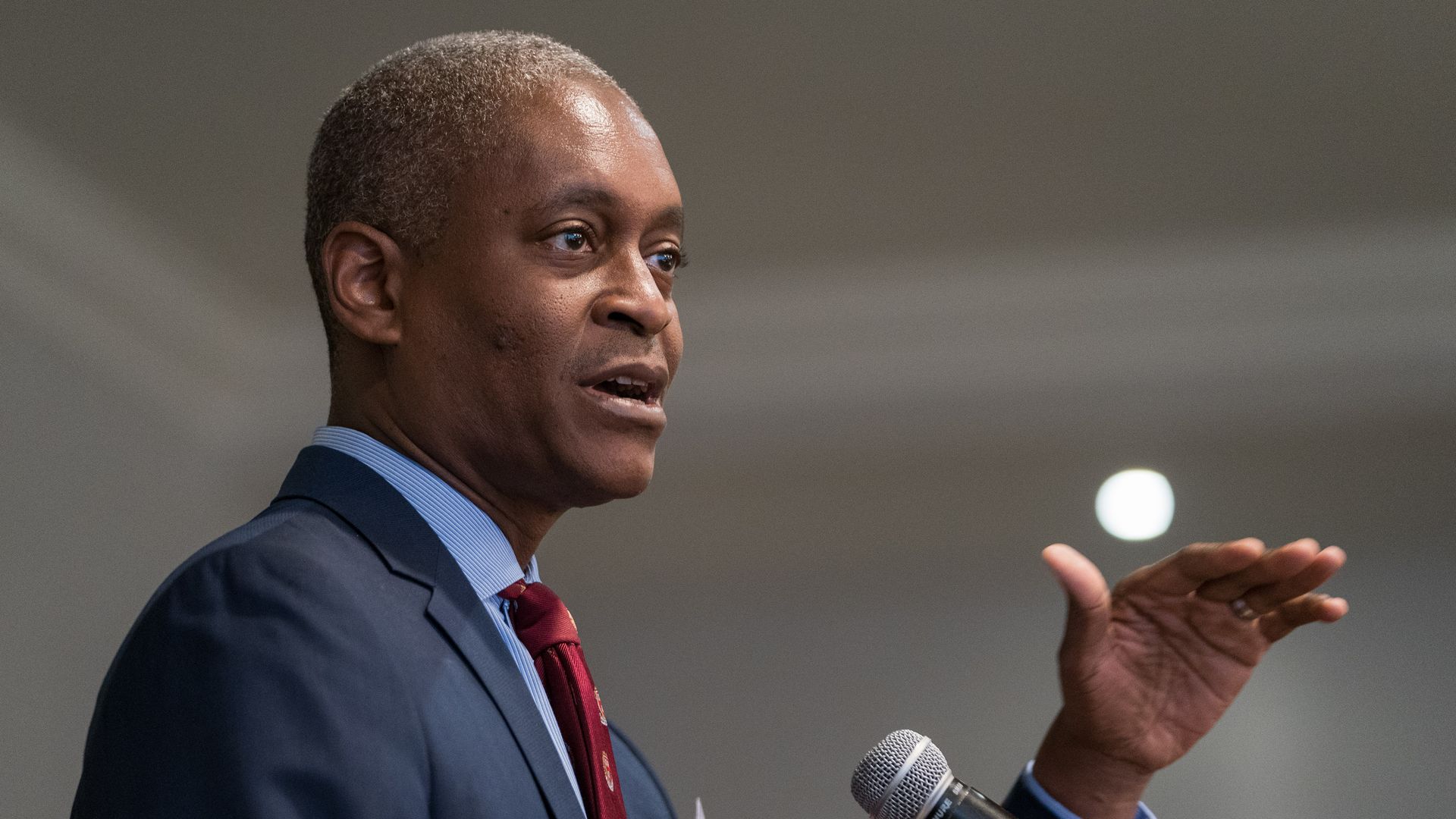| | | | | | | Presented By NetJets | | | | Axios Markets | | By Sam Ro ·Aug 10, 2021 | | Today's newsletter is 1,258 words, 5 minutes. 📈 of the day: "Last week, we imposed an approximate 5% admissions ticket price increase at many of our US theaters. On average, that's about $0.50 or so in an increased admissions ticket price. We think consumers will find that palatable." - AMC Entertainment CEO Adam Aron | | | | | | 1 big thing: Congress' half-trillion-dollar weapon |  | | | Illustration: Shoshana Gordon/Axios | | | | Members of Congress from both parties are trying to turn the massive federal employee pension fund into a tool for their political ends, using its huge financial sway to support or oppose certain industries, Axios' Lachlan Markay writes. Why it matters: The half-trillion-dollar Thrift Savings Plan is the largest defined contribution retirement plan in the world. But those charged with overseeing it say politicizing any of its investment decisions risks its overall financial health. - Democrats want to use it to go after fossil fuel companies. Republicans want to bar Chinese-owned firms from getting any money.
- The Democratic chairman of the Senate committee overseeing the fund — and which will consider President Biden's new nominees to the board running it — feels any effort to use the TSP to advance policy goals is misguided, an aide tells Axios.
Our thought bubble: For context, the largest state pension fund, the $469 billion California Public Employees' Retirement System (CalPERS), has been able to use its status as a massive institutional investor to influence changes in corporate governance. CalPERS in June publicly backed fellow Exxon Mobil shareholder Engine No. 1's battle to install new climate-friendly directors on the energy company's board. What's happening: Biden last week nominated four new members of the Federal Retirement Thrift Investment Board, which oversees the Thrift Savings Plan. - Progressives are pushing for Biden's nominees to divest the fund's assets from fossil fuel companies. The Revolving Door Project, a progressive good-government group, called on one of the nominees to "rise to the occasion" and lead that effort.
- Sens. Jeff Merkley (D-Ore.) and Maggie Hassan (D-N.H.) requested a study this year on the feasibility of that fossil fuel divestment. Hassan is a member of the Senate Homeland Security and Government Affairs Committee, which will consider Biden's new nominees.
- Merkley told The Daily Poster last week he has pressed the Biden administration "to ensure that divestment is a priority for appointees to the Federal Retirement Thrift Investment Board."
What they're saying: HSGAC Chairman Sen. Gary Peters (D-Mich.) is cool on investment decisions that aren't financially rooted. - "Sen. Peters does not think that federal employees' retirement funds should be used as a political football," a committee aide told Axios.
It's not just Democrats trying to leverage the massive fund. - Sen. Tommy Tuberville (R-Ala.) introduced legislation in May that would codify a Trump administration policy temporarily blocking the fund from investing in Chinese-owned companies.
- A previous version of the legislation was introduced last Congress by Sen. Josh Hawley (R-Mo.), who also sits on the HSGAC.
Go deeper. |     | | | | | | 2. Catch up quick | | AMC Entertainment says it will accept bitcoin as payment for movie tickets and concessions by year-end. (CNBC) Canadian Pacific Railway plans to increase its bid for Kansas City Southern. (WSJ) An amendment in the infrastructure bill that would limit tax reporting requirements for cryptocurrencies firms was blocked on Monday. (Axios) |     | | | | | | 3. Workers quit at historic clip |  Data: BLS, FRED; Chart: Axios Visuals Demand for labor seems to be getting stronger, and workers are taking advantage by quitting. Why it matters: Businesses are scrambling to fill job openings as they try to catch up with booming demand. - Many companies are aggressively raising wages to recruit, which has resulted in workers quitting their old jobs for better opportunities.
By the numbers: 3.87 million workers quit their jobs in June, according to the BLS's Job Openings and Labor Turnover Survey. This is close to the record, set in April, of 3.99 million. - This represents 2.7% of the workforce in June, which is also just below April's record rate of 2.8%.
- Quits as a percentage of total separations — which includes layoffs, firings and retirements — reached 69.3% in June. This measure, also known as the "take this job and shove it" indicator is at an all-time high.
What they're saying: "People tend to leave their jobs when they find a better opportunity, and we think part of the high quits rate reflects the massive suburbanization trend that started during the pandemic," DataTrek Research co-founder Jessica Rabe tells Axios. Zoom out: Many of these folks are accounted for in the 6.72 million hirings that occurred during the month. - But the fact that job openings still set a new record of 10.07 million during the period speaks to how strong the demand for labor continues to be.
- For context, there were 9.48 million unemployed workers during the period.
In other words, there were more job openings than unemployed workers, a dynamic that hasn't occurred since before the pandemic. The bottom line: "Labor demand keeps getting stronger," Indeed Hiring Lab economic research director Nick Bunker writes. - "Job seekers, both jobless and employed, are taking advantage of this situation with job switching near historic levels and nominal wages growing quickly. The question now is by how much and how quickly will this situation fade."
|     | | | | | | A message from NetJets | | Guaranteed access to your favorite destinations | | |  | | | | NetJets owns and operates the largest, most diverse fleet of private jets in the world. With access to 760+ aircraft reaching 5,000+ airports across the world, safe and reliable travel has never been easier. Find the perfect aircraft for you. | | | | | | 4. Gold fails as an inflation hedge |  Data: Federal Reserve Bank of St. Louis; Chart: Danielle Alberti/Axios As inflation reaches its highest levels since 2008, the price of gold has fallen more than 16% in a year, Axios Capital author Felix Salmon writes. Why it matters: Gold is often sold as a hedge against inflation. It isn't. By the numbers: The price of gold has fallen by almost $350 over the past year — from $2,069 per ounce on Aug. 4, 2020, to $1,726 on Aug. 9, 2021. - That's a small drop compared to what happened between 2011 and 2015 when the price of gold fell by more than $800 per ounce.
Flashback: After gold broke the $2,000 per ounce barrier last year, Bank of America analysts forecast that it would hit $3,000 within 18 months. - The gold price isn't predictable, however. The foremost use case for the metal is simply sitting on it and doing nothing — or shilling it to viewers of right-wing television.
- Bitcoin has become increasingly attractive to people convinced that the U.S. currency is going to collapse, making gold feel a bit outmoded.
|     | | |  | | | | If you like this newsletter, your friends may, too! Refer your friends and get free Axios swag when they sign up. | | | | | | | | 5. Fed watch: Talking about tapering sooner |  | | | Atlanta Fed president Raphael Bostic; Photo: Elijah Nouvelage, Bloomberg via Getty Images | | | | Federal Reserve officials say Friday's blockbuster jobs report supports the case for tapering supportive monetary policy relatively soon. Why it matters: With the economy progressing, everyone wants to know when the Fed will taper its quantitative easing program and eventually start hiking interest rates. What they're saying: Atlanta Fed president Raphael Bostic told reporters on Monday that the jobs report was "definitely quite encouraging." - He said he thinks the Fed could begin tapering QE sometime in the "October-to-December range," but added he would be "open to moving it forward" depending on the strength of upcoming jobs data.
- At another event, Richmond Fed president Thomas Barkin said there was "still more room to run in the labor market."
- But Barkin, as well as Bostic, believes that inflation is at a level that meets the requirement for tapering QE.
- Bostic and Barkin are both voting members of the Fed's FOMC policy-setting committee.
Meanwhile, Boston Fed president Eric Rosengren — who is not a voting member of the FOMC — took on a slightly more hawkish tone, telling the Associated Press that the economic data already supports the Fed announcing in September that it would start tapering QE "sometime this fall." What to watch: The August jobs report will be released on Sept. 3. Another robust report could tilt more FOMC members toward announcing the taper sooner. But it remains to be seen how the spike in COVID cases is affecting hiring. The bottom line: The economy has indeed made a ton of progress on the labor market front, and the inflation data has been trending above the Fed's 2% average target. Whether it's in September, October, November or a little later, most seem to agree that the trajectory of the economy supports a tapering announcement in the next few months. |     | | | | | | A message from NetJets | | Connecting you to what matters most | | |  | | | | No lengthy layovers, security screenings, and baggage claim. Continue your workday in-flight, visit multiple destinations in one day — and still get home in time for dinner. Here's how: NetJets will get you there. Learn more about the benefits of NetJets. | | |  | | It'll help you deliver employee communications more effectively. | | | | | | Axios thanks our partners for supporting our newsletters. If you're interested in advertising, learn more here.
Sponsorship has no influence on editorial content. Axios, 3100 Clarendon Blvd, Suite 1300, Arlington VA 22201 | | | You received this email because you signed up for newsletters from Axios.
Change your preferences or unsubscribe here. | | | Was this email forwarded to you?
Sign up now to get Axios in your inbox. | | | | Follow Axios on social media:    | | | | | |
No comments:
Post a Comment